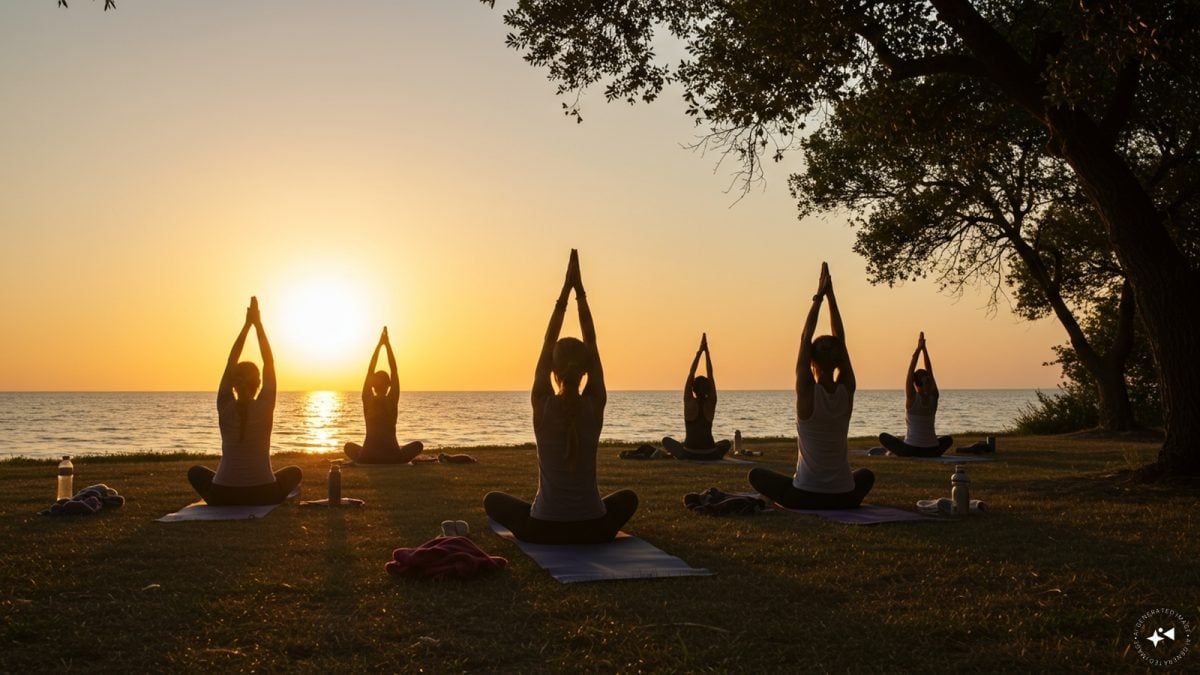Last update:
Summer Solstice 2025 In the Northern Hemisphere will occur on Friday, June 20, 2025 at 10:42 PM EDT, which is Saturday, June 21, 2025 at 8:12 am
Summer Solstice 2025: This celestial event has a deep cultural, historical and scientific importance. (Image generated by AI)
Summer Solstice 2025: The summer solstice marks the longest day of the year and generally falls between June 20 and June 22. Also known as the summer or summer solstice, its name comes from the Latin terms “sun” (sun) and “sister” (to stay still), symbolizing the moment when the sun seems pause in its peak in the sky.
This celestial event has a deep cultural, historical and scientific importance, and is honored with various traditions and celebrations worldwide.
What is summer solstice and what causes it?
The 2025 Summer Solstice in the Northern Hemisphere will occur on Friday, June 20, 2025 at 10:42 PM EDT, which is Saturday, June 21, 2025 at 8:12 AM marks the longest day of the year in the northern hemisphere and the shortest in the southern hemisphere.
This event occurs because the Earth is inclined at an angle of 23.5 degrees. During this time of the year, the northern hemisphere is inclined towards the sun, which makes the sun seem higher in the sky at noon and extends to the day.
Summer Solstice History
The term “solstice” comes from the Latin words Sol, which means sun and sister, which means staying or stopping. This astronomical event takes place twice a year, once in the northern hemisphere between June 20 and 22, and once in the southern hemisphere between December 20 and 23, depending on the calendar year and the time zone.
Ancient civilizations observed how the position of the sun in the sky, the duration of the day and the sunrise/sunset points constantly changed throughout the year. Many even built structures, such as Stonehenge in England, to trace these solar movements, honor the sun and predict seasonal changes.
During the June solstice, the North Pole is tilted more directly towards the sun, while the South Pole is tilted further. This inclination makes the areas north of Ecuador experience the light of the day that lasts more than 12 hours, while the southern Ecuador have shorter days.
A few thousand years ago, the summer solstice occurred when the sun was placed in constellation cancer (Latin for “crab”). This is how the latitude line known as the tropics of cancer obtained its name.
In the June solstice, the sun reaches its northernmost point in the sky, directly at the top of the Tropic of Cancer, briefly turns off and then begins to change south again.
Contrary to what some may think, the road of the sun on this day is not a straight line: forms a curved arch in the sky. Due to this extreme position, sunlight enters parts of houses and buildings that generally remain in the shadow the rest of the year.
In the summer solstice, the Sun comes out at its most remote point and is put in its location further to the northwest.
The solstice date is not the same every year. It falls on June 20, 21 or 22, depending on the orbit and inclination of the earth, not our calendar manufactured by the human being. This variability is due to astronomical mechanics, not to man made by man.
Summer solstice traditions worldwide
Through cultures, summer solstice has inspired unique traditions that honor the power of the sun:
- Stonehenge retention (United Kingdom): Miles gather to see at dawn align with ancient stones.
- Midsummer (Sweden): Celebrated with crowns of flowers, popular dances and parties under the sun of midnight.
- Kupala Night (Eastern Europe): It implies bonfires, dancing and jumping on flames to bring good luck.
- Inti Raymi (Peru): An Incan Sun Festival held in Cusco with colorful parades and ceremonies.
- Yoga (India/Global): Coinciding with the solstice, people practice yoga at dawn to promote well -being.
- Dawn health (USA): Spiritual communities gather at dawn in parks or on beaches for meditation and rituals.
- Fire Festivals (Spain): The cities light the fires to symbolize the burning of bad energy and welcome abundance.
- Floral offers (Hawaii): The locals present to Leis and make Hula dances to celebrate the, the god of the sun.
How to celebrate the longest day of the year?
- You do not need ancient ruins or crowds to enjoy the solstice. Start your early day watching dawn, ideally from a roof, a hill or beach. Practice some greetings from the sun or the light that extends outdoors to greet the day.
- Spend time in nature: go walking, swim in a lake or simply walk barefoot on the grass. Create a picnic in the backyard with food with sunny themes such as citrus salads, honey cakes and ice herbal cakes.
- Decorate your space with sunflowers, candles and anything golden.
- At sunset, turn on a small bonfire or candle and reflect on your goals for the season. Either alone or with their loved ones, hug the light, literally and metaphorically.

Bhaswati Senguta is a sub -editor in News18, where he works closely with the web stories and the photo gallery team to create visually attractive and shocking digital content. She also contributes to the lifestyle sect …Read more
Bhaswati Senguta is a sub -editor in News18, where he works closely with the web stories and the photo gallery team to create visually attractive and shocking digital content. She also contributes to the lifestyle sect … Read more
- First published:












